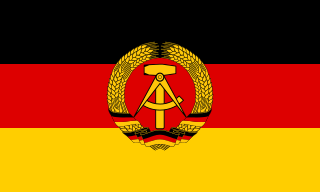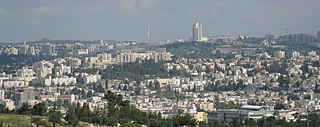
Asia is Earth's largest and most populous continent, located primarily in the Eastern and Northern Hemispheres. It shares the continental landmass of Eurasia with the continent of Europe and the continental landmass of Afro-Eurasia with both Europe and Africa. Asia covers an area of 44,579,000 square kilometres (17,212,000 sq mi), about 30% of Earth's total land area and 8.7% of the Earth's total surface area. The continent, which has long been home to the majority of the human population, was the site of many of the first civilizations. Its 4.5 billion people constitute roughly 60% of the world's population.

Anatolia, also known as Asia Minor, is a large peninsula in Western Asia and the westernmost protrusion of the Asian continent. It makes up the majority of modern-day Turkey. The region is bounded by the Turkish Straits to the northwest, the Black Sea to the north, the Armenian Highlands to the east, the Mediterranean Sea to the south, and the Aegean Sea to the west. The Sea of Marmara forms a connection between the Black and Aegean seas through the Bosporus and Dardanelles straits and separates Anatolia from Thrace on the Balkan peninsula of Southeast Europe.

The Berlin Wall was a guarded concrete barrier that physically and ideologically divided Berlin from 1961 to 1989. Construction of the wall was commenced by the German Democratic Republic on 13 August 1961. The Wall cut off West Berlin from surrounding East Germany, including East Berlin. The barrier included guard towers placed along large concrete walls, accompanied by a wide area that contained anti-vehicle trenches, beds of nails and other defenses. The Eastern Bloc portrayed the Wall as protecting its population from fascist elements conspiring to prevent the "will of the people" from building a socialist state in East Germany.

EastEnders is a British soap opera created by Julia Smith and Tony Holland which has been broadcast on BBC One since 1985. Set in Albert Square in the East End of London in the fictional borough of Walford, the programme follows the stories of local residents and their families as they go about their daily lives. Initially there were two 30-minute episodes per week, later increasing to three, but since 2001, episodes have been broadcast on every weekday except Wednesday. The three-month suspension of production in 2020, due to the COVID-19 pandemic, led to broadcasts of the show being reduced to two 30-minute episodes per week, and eventually, the show going on a transmission break. Restrictions to filming resulted in the programme returning to transmission, with four 20-minute episodes per week resuming on 7 September 2020.

East Pakistan was the eastern provincial wing of Pakistan between 1947 and 1971, covering the territory of the modern country Bangladesh. Its land borders were with India and Burma, with a coastline on the Bay of Bengal. East Pakistanis were popularly known as "Pakistani Bengalis"; to distinguish this region from India's state West Bengal, East Pakistan was known as "Pakistani Bengal".

East Germany, officially the German Democratic Republic, was a state that existed from 1949 to 1990, the period when the eastern portion of Germany was part of the Eastern Bloc during the Cold War. Commonly described as a communist state in English usage, it described itself as a socialist "workers' and peasants' state". It consisted of territory that was administered and occupied by Soviet forces following the end of World War II—the Soviet occupation zone of the Potsdam Agreement, bounded on the east by the Oder–Neisse line. The Soviet zone surrounded West Berlin but did not include it and West Berlin remained outside the jurisdiction of the GDR.

Jerusalem is a city in Western Asia, on a plateau in the Judaean Mountains between the Mediterranean and the Dead Sea. It is one of the oldest cities in the world, and is considered holy to the three major Abrahamic religions—Judaism, Christianity, and Islam. Both Israelis and Palestinians claim Jerusalem as their capital, as Israel maintains its primary governmental institutions there and the State of Palestine ultimately foresees it as its seat of power. Neither claim, however, is widely recognized internationally.

The Levant is an approximate historical geographical term referring to a large area in the Eastern Mediterranean region of Western Asia. In its narrowest sense, it is equivalent to the historical region of Syria, which included present-day Syria, Lebanon, Jordan, Israel, Palestine and most of Turkey south-east of the middle Euphrates. In its widest historical sense, the Levant included all of the Eastern Mediterranean with its islands; that is, it included all of the countries along the Eastern Mediterranean shores, extending from Greece to Cyrenaica in eastern Libya.

The Middle East is a region spanning the vast majority of Western Asia and all of Egypt. The term has come into wider usage as a replacement of the term Near East beginning in the early 20th century. The broader concept of the "Greater Middle East" also includes the Maghreb, Sudan, Djibouti, Somalia, the Comoros, Afghanistan, Pakistan, and sometimes Transcaucasia and Central Asia into the region. The term "Middle East" has led to some confusion over its changing definitions.

Southeast Asia or Southeastern Asia is the geographical southeastern subregion of Asia, consisting of the regions that are south of China, southeast of the Indian subcontinent and north-west of Australia. Southeast Asia is bordered to the north by East Asia, to the west by South Asia and the Bay of Bengal, to the east by Oceania and the Pacific Ocean, and to the south by Australia and the Indian Ocean. Apart from the British Indian Ocean Territory and two out of 26 atolls of Maldives in South Asia, Southeast Asia is the only other subregion of Asia that lies partly within the Southern Hemisphere. The majority of the subregion is still in the Northern Hemisphere. East Timor and the southern portion of Indonesia are the only parts that are south of the Equator.

West Berlin was a political enclave which comprised the western part of Berlin during the years of the Cold War. Although no specific date on which the sectors of Berlin occupied by the Western Allies became "West Berlin", 1949 is widely accepted as when the name was adopted. Although not a part of the Federal Republic of Germany, West Berlin aligned itself politically with that state and was directly or indirectly represented in its federal institutions.

The Dutch East India Company, officially the United Dutch East India Company, was a megacorporation founded by a government-directed consolidation of several rival Dutch trading companies (voorcompagnieën) in the early 17th century. It is believed to be the largest company to ever have existed in recorded history. It was established on March 20, 1602, as a chartered company to trade with Mughal India in the early modern period, from which 50% of textiles and 80% of silks were imported, chiefly from its most developed region known as Bengal Subah. In addition, the company traded with Indianised Southeast Asian countries when the Dutch government granted it a 21-year monopoly on the Dutch spice trade.

The East India Company (EIC), also known as the Honourable East India Company (HEIC), East India Trading Company (EITC), the English East India Company or the British East India Company, and informally known as John Company, Company Bahadur, or simply The Company was an English and later British joint-stock company founded in 1600. It was formed to trade in the Indian Ocean region, initially with the East Indies, and later with Qing China. The company seized control of large parts of the Indian subcontinent, colonised parts of Southeast Asia and Hong Kong after the First Opium War, and maintained trading posts and colonies in the Persian Gulf Residencies.

A geographic coordinate system (GCS) is a coordinate system associated with positions on Earth. A GCS can give positions:

German reunification was the process in 1990 in which the German Democratic Republic (GDR) became part of the Federal Republic of Germany (FRG) to form the reunited nation of Germany.

The east coast of the United States, also known as the Eastern Seaboard, the Atlantic Coast, and the Atlantic Seaboard, is the coastline along which the eastern United States meets the North Atlantic Ocean. Regionally, the term refers to the coastal states and area east of the Appalachian Mountains that have shoreline on the Atlantic Ocean, from north to south, Maine, New Hampshire, Massachusetts, Rhode Island, Connecticut, New York, New Jersey, Delaware, Maryland, Virginia, North Carolina, South Carolina, Georgia and Florida.

The Bangladesh Liberation War, also known as the Bangladesh War of Independence, or simply the Liberation War in Bangladesh, was a revolution and armed conflict sparked by the rise of the Bengali nationalist and self-determination movement in what was then East Pakistan during the 1971 Bangladesh genocide. It resulted in the independence of the People's Republic of Bangladesh. The war began after the Pakistani military junta based in West Pakistan launched Operation Searchlight against the people of East Pakistan on the night of 25 March 1971. It pursued the systematic elimination of nationalist Bengali civilians, students, intelligentsia, religious minorities and armed personnel. The junta annulled the results of the 1970 elections and arrested Prime minister-designate Sheikh Mujibur Rahman. The war ended on 16 December 1971 after West Pakistan surrendered.

East Timor or Timor-Leste, officially the Democratic Republic of Timor-Leste, is an island country in Southeast Asia. It comprises the eastern half of the island of Timor, the nearby islands of Atauro and Jaco, and Oecusse, an exclave on the northwestern side of the island surrounded by Indonesian West Timor. Australia is the country's southern neighbour, separated by the Timor Sea. The country's size is about 15,007 square kilometres (5,794 sq mi).

East Asia is the eastern region of Asia, which is defined in both geographical and ethno-cultural terms. The modern states of East Asia include China, Japan, Mongolia, North Korea, South Korea, and Taiwan. China, North Korea, South Korea and Taiwan are all unrecognized by at least one other East Asian state due to severe ongoing political tensions in the region, specifically the division of Korea and the political status of Taiwan. Hong Kong and Macau, two small coastal quasi-dependent territories located in the south of China, are officially highly autonomous but are under de jure Chinese sovereignty. Siberia borders East Asia's north, Southeast Asia the south, South Asia the southwest and Central Asia the west. To the east is the Pacific Ocean and to the southeast is Micronesia.


















